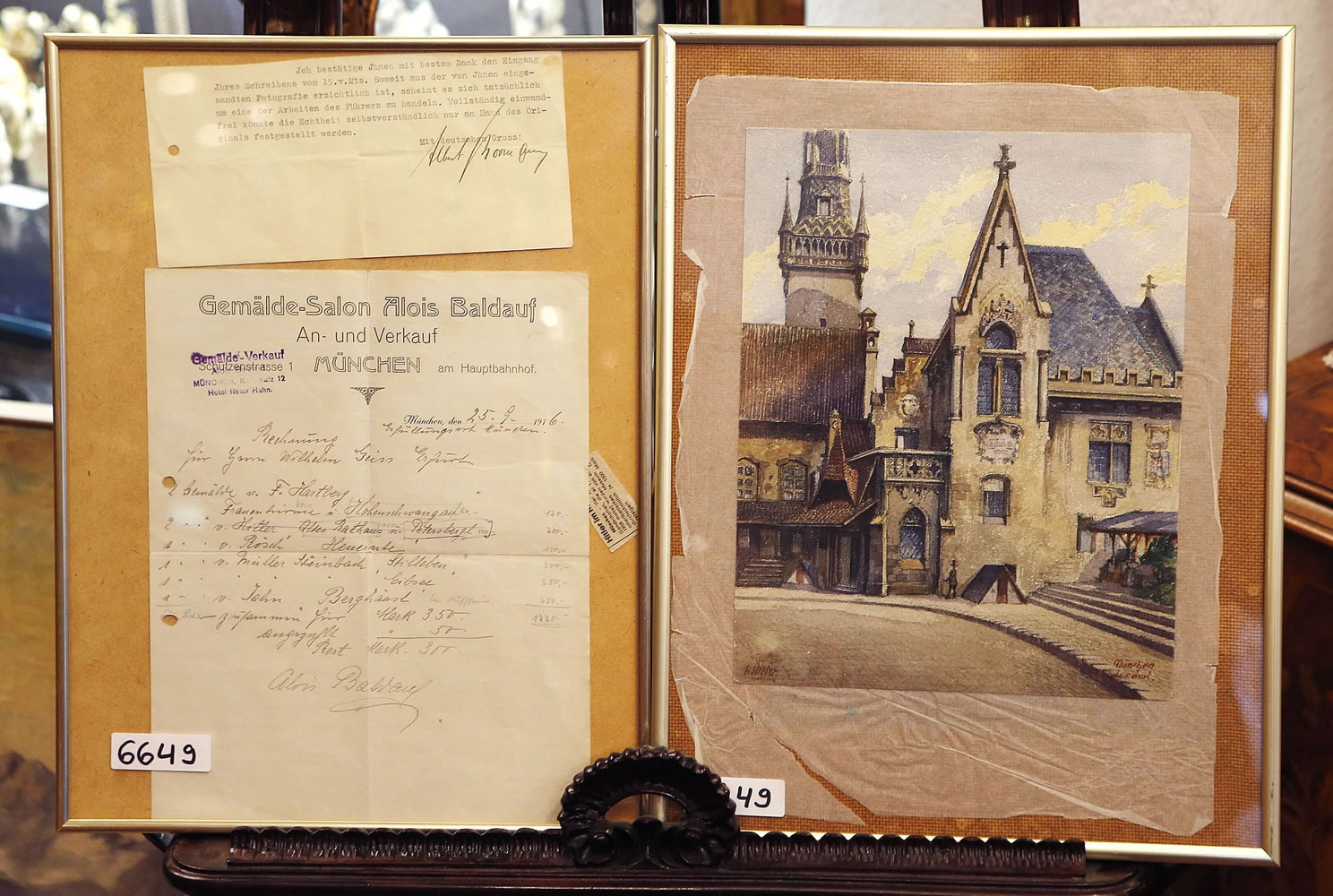Adolf Hitler painted a lackluster composition of an old municipal building in Munich in 1914. At the time he was not yet a genocidal tyrant but a struggling Austrian-born artist trying to make ends meet in the Bavarian capital. He would soon enlist in a local infantry regiment and fight for Germany in World War I, a key step to his later emergence as a political figure.
The painting, which is believed to be one of 2,000 painted by the Nazi dictator, is going on auction this weekend in the city of Nuremberg. Its base price is set around $5,500, but the auction house expects it to fetch at least $60,000. The work, titled “The Old City Hall,” is being sold by a pair of elderly sisters. It was originally acquired by their grandfather in 1916.
“It’s perfectly well done, but I’d rate its artistic value as fairly minimal,” said auction house director Kathrin Weidler.
Between 1908 and 1913, Hitler had spent five years of “misery and woe,” as he put it, living and toiling amid Vienna’s bohemian intellectual ferment. He was not especially talented, and his resentment of aspects of Vienna’s avant-garde would lead to his later classification of myriad modernist works of art as “degenerate.”
“His taste in painting,” writes Peter Schjeldahl, the New Yorker’s art critic, “was and remained philistine.”



